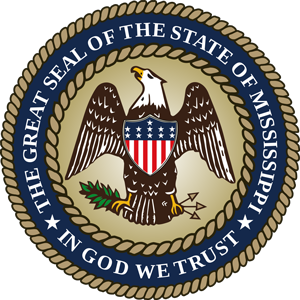An article written by Robert "Kris" Riemann, P.E.
Almost 20 years ago, I went through the worst disaster in my life and that of my hometown, Gulfport, Mississippi. Watching the weather crews deliver the news that Katrina had come across Florida and entered the Gulf of Mexico and had gone from a Category 2 to a Category 5 hurricane with peak winds of up to 150 mph and was pushing 30 feet of tidal surge was something that we did not want to hear.

Nearly all structures within half a mile of the southern-facing Gulfport coastline was destroyed. The surge forced ships, casino barges, large dredging barges, and shipping containers inland, knocking down buildings and houses like a bowling ball knocks down pins. Three thousand homes were destroyed as well as miles of water, sewer, and drainage infrastructure. However, I felt like Gulfport Public Works was ready.
Provided below are 10 of the more than 20 lessons I learned and information I would recommend to others who might experience a weather-related catastrophe like Katrina.
- City-Wide Disaster Preparedness, Response, and Recovery Plan – The City/County needs to develop a City-Wide Disaster Preparedness Plan. All City plans should emulate or closely follow what the County Civil Defense Office has in place and what is recommended by the State-MEMA.
- FEMA/MEMA Pre-Season Briefings – FEMA/MEMA should hold a meeting prior to Hurricane Season each year to update local governments and emergency responders on any latest changes to the paperwork/documentation requirements.
- Pre-Season Meeting with the Mayor, Supervisors, Directors, and Manager - Provide all FEMA-MEMA needed information and go over the City/County’s plan with information including Purchase Request forms.
- Communication with Cell Phones – Make sure that all departments can communicate with cellular phones and radios. Companies should demonstrate reliability for their services.
- Food – All employees will need food to eat during a disaster emergency. Your agency should have contracts set up before the disaster to feed your staff. You should have at least seven days of sustainable food sources, like sandwiches, to eat until the contract can become active. (Gulfport Public Works ate peanut butter and jelly sandwiches for a few days).
- Fuel – All equipment will need fuel, both gasoline and diesel, to run during a disaster for seven days including generators.
- Establish “Pre-Event Contracts” – Besides establishing a Debris Pre-Event Contract, there are other situations where pre-event contracts would be very beneficial, such as Emergency generators (large units – 100KW to 300KW) support, Emergency By-Pass Pumps for sewer system support, Emergency food and potable water support (Food Service Contract).
- Current pictures of various sites – Take pictures the day before the storm of all facilities. Keep up-to-date pictures of the different facilities for proof of setup/contents/utilities.
- Distribute Your Fleet – Distribute your fleet around the City or County. Allow the employees to take a vehicle owned by the City or County home to prevent damage of all the vehicles by a tornado at one location and give the employees a faster response time.
- Get Assistance from Federal Agencies Opinion in Writing - Federal opinion from the USEPA on what infrastructure needed to be replaced was key to Gulfport to prove to FEMA that what we were doing was justified.
 I believe I was put in Gulfport, Mississippi, for a reason and I am glad that I was there for Hurricane Katrina. I was proud to be both a Mississippian and an American during this event. As a community and a state, I feel like we kept the spirit of the United States alive and well. Many heroes were born in those weeks following Katrina and in only 6.5 years after Hurricane Katrina struck the Mississippi Coast, Gulfport’s Infrastructure was fully restored.
I believe I was put in Gulfport, Mississippi, for a reason and I am glad that I was there for Hurricane Katrina. I was proud to be both a Mississippian and an American during this event. As a community and a state, I feel like we kept the spirit of the United States alive and well. Many heroes were born in those weeks following Katrina and in only 6.5 years after Hurricane Katrina struck the Mississippi Coast, Gulfport’s Infrastructure was fully restored.
About the Author: Robert K. Riemann is a native Mississippian and lifelong resident of Gulfport, Harrison County, Mississippi. He is the owner of Engineering Excellence with Kris Riemann & Associates, PLLC and was named National Public Works Director of the Year in 2006.
For more information on Kris’s experience during Hurricane Katrina including personal notes and his full list of Hurricane Do’s and Don’t’s – you can contact him at 228-518-2980 or via Email at kris@engineeringxellence.com.
Hurricane Katrina by the numbers:
|
The Damage |
The Recovery |
The Debris |
The funding |
|
9,000 Gulfport Housing Units Affected 3,000 Units Destroyed |
One Week to Clear Major Roads and to restore water to 90% of the City (10% was destroyed) Three Weeks to remove boil water notices Four weeks to restore sewer and traffic signals |
Three Million Cubic Yards Removed 18 Months for completion Total Cost of $79.7 Million |
Funding $231.60 Million in Public Assistance from FEMA All FEMA-related projects completed by August 2012 Replacement of 40 Miles of Water, 18 miles of sewer, 8 miles of storm drainage, 4 new sewer pump stations at a cost of $100.0 Million |




Articles by contributors are not necessarily the viewpoint or opinion of the Mississippi Board of Licensure for Professional Engineers & Surveyors.
